How Strong Is The Human Bite Compared To Animals? COMPARE.EDU.VN delves into the fascinating world of bite force, exploring the pressure exerted by various creatures, including humans, to understand where we stand in the animal kingdom. Discover bite strength, jaw pressure and the science behind animal chompers right here.
1. Understanding Bite Force: The Science Behind Animal Chompers
Bite force, measured in pounds per square inch (psi), quantifies the pressure an animal exerts with its bite. It’s the pound force applied to an area of one square inch (6.5 square centimetres). This pressure is determined by several factors, including jaw muscles, jawbone structure, teeth surface area, and, surprisingly, the size of the object being bitten.
1.1 The Influence of Bite Size on Bite Force
A Brown University study revealed a crucial aspect of bite force: it’s dependent on what an animal is biting. Muscle force is directly related to the extent of muscle stretch during biting. This means that an animal’s bite strength is not fixed; it varies based on the size and resistance of the object being bitten.
1.2 The Role of Jaw Muscles, Bones, and Teeth
The power of an animal’s bite is not solely determined by muscle strength. The structure of the jawbone and the design of the teeth play equally important roles. For example, hyenas possess specialized premolars designed for crushing bones, while the impressive canine teeth of a polar bear help them pierce the blubber of Arctic animals. These evolutionary adaptations have a direct impact on the intensity and effectiveness of an animal’s bite.
1.3 Measuring the Bite: Computer Models and CT Scanners
Scientists have developed methods to estimate bite force, particularly in animals that are difficult or dangerous to study directly. Computer models, based on multiple X-ray images from computerized tomography (CT) scans of animal skulls, are used to calculate the bite force of great white sharks, among others. This allows researchers to understand the bite capabilities of these animals without direct measurement from living specimens.
2. The Top 10 Animals with the Strongest Bites
Let’s embark on a journey to discover the top 10 animals with the strongest bites on Earth, comparing their bite force and understanding the purpose behind their powerful chompers.
2.1 10. Hyena (1,100psi)
Distribution: Sub-Saharan Africa
Hyena bite force is used for: Grinding down bones to get at the tasty marrow
Hyenas, with a bite force of 1,100 psi, are equipped with conical-shaped premolars, specialized teeth designed for breaking and crushing bone. This allows them to extract every last bit of nutrition from carcasses, digesting even the bone thanks to highly concentrated hydrochloric acid in their stomachs.
2.2 9. Grizzly Bear (1,160psi)
Distribution: Canada and USA
Grizzly bear bite force is used for: Ripping into animal flesh, breaking the bones of large prey
Hikers are rightly wary of grizzly bears. Beyond their immense size and sharp claws, they boast a bite force of 1,160 psi, capable of crushing a bowling ball or a human skull with ease. Their powerful jaws allow them to take down large prey and access the nutrient-rich marrow within bones.
2.3 8. Polar Bear (1,200psi)
Distribution: Arctic Circle
Polar bear bite force is used for: Chomping through the thick blubber of Arctic animals
As marine mammals, polar bears have the strongest bite among bears, reaching 1,200 psi. Their large canine teeth, growing up to 5cm, are designed for piercing the thick blubber of seals and other Arctic prey.
2.4 7. Gorilla (1,300psi)
Distribution: Forests of central Africa
Gorilla bite force is used for: Chewing hard branches and tearing bark off trees
Despite being largely vegetarian, gorillas possess a bite force of 1,300 psi. They use their powerful jaws to strip bark from trees, separating the outer layer from the more palatable inner bark.
2.5 6. Bull Shark (1,350psi)
Distribution: Warm coastal areas, rivers and lakes worldwide
Bull shark bite force is used for: A widely varied diet, from oysters and turtles to baby hippos and other sharks
Bull sharks have a remarkable dental arsenal. With up to 350 teeth at any given time, and a conveyor belt system of tooth replacement, they can grow up to 50,000 teeth in a lifetime. This, combined with a bite force of 1,350 psi, allows them to consume a diverse diet, from oysters and turtles to other sharks.
2.6 5. Jaguar (1,500psi)
Distribution: Southwestern USA, Central America, South America
Jaguar bite force is used for: Cutting through the armored skin of a crocodile, shells of turtles and tortoises, and crushing bone
Jaguars are opportunistic hunters with a bite force of 1,500 psi. Their powerful bite allows them to take down animals up to four times their own weight, piercing the skulls of their prey with a single bite. They can even pierce the armored skin of crocodiles and the shells of turtles.
2.7 4. Hippopotamus (1,800psi)
Distribution: Sub-Saharan Africa
Hippo bite force used for: Defense against apex predators, or attacking/defending against other hippos
Hippos boast the largest mouth and teeth of any land mammal. Their canine teeth, typically measuring 71cm, can reach a staggering 122cm. With a bite force of 1,800 psi, they use their powerful jaws for defense and combat.
2.8 3. American Alligator (2,125psi)
Distribution: Southern USA
American alligator bite force used for: Ambushing prey, any prey
American alligators are ambush predators with a bite force of 2,125 psi. They lie in wait for unsuspecting prey, consuming anything from snakes and fish to mammals and even insects. An alligator’s bite is so strong, it can lift a small truck.
2.9 2. Saltwater Crocodile (3,700psi)
Distribution: India, Southeast Asia, Australia
Saltwater crocodile bite force used for: Gripping onto prey while they use a death roll
Saltwater crocodiles, the world’s largest living reptiles, possess a bite force of 3,700 psi. These “living fossils” ambush their prey with a violent lunge, gripping them tightly while performing a death roll to subdue them.
2.10 1. Nile Crocodile (5,000psi)
Distribution: Sub-Saharan Africa
Nile crocodile bite force used for: Crushing their prey before swallowing it, often whole
Despite being smaller than saltwater crocodiles, Nile crocodiles reign supreme with a bite force of 5,000 psi. These aggressive and territorial predators use their powerful bite to take down any prey that ventures near the water, crushing them before swallowing them whole.
3. Human Bite Force: A Comparison
So, how does the human bite compare to these powerful animals?
3.1 The Average Human Bite Force
While we may not be at the top of the food chain when it comes to bite force, the average human bite registers at approximately 162 psi. This is significantly lower than the Nile crocodile’s bite force, which is over 30 times more powerful. However, our bite strength is stronger than some of our primate relatives, showcasing our evolutionary adaptations.
3.2 The World Record for Human Bite Force
The Guinness World Record for the strongest human bite is held by Richard Hoffman, who achieved a bite force of over six times the average human bite. This extraordinary feat was measured at the College of Dentistry, University of Florida, using a gnathodynamometer in 1986.
3.3 Factors Affecting Human Bite Force
Several factors influence human bite force, including:
- Jaw Muscle Size and Strength: Larger and stronger jaw muscles generally result in a more powerful bite.
- Jawbone Structure: The shape and density of the jawbone contribute to the overall strength of the bite.
- Teeth Alignment and Condition: Properly aligned and healthy teeth allow for optimal force distribution during biting.
- Age: Bite force tends to decrease with age due to muscle loss and changes in bone density.
- Sex: Men generally have a slightly higher bite force than women due to differences in muscle mass.
4. Implications of Bite Force: Beyond Just Eating
Bite force is more than just a measure of how well an animal can eat. It has significant implications for their survival, hunting strategies, and even social interactions.
4.1 Hunting and Predation
For predators, a strong bite force is crucial for capturing and subduing prey. Animals like crocodiles and jaguars rely on their powerful bites to inflict fatal injuries and prevent their prey from escaping.
4.2 Defense and Competition
Bite force also plays a vital role in defense against predators and competition for resources. Hippos, for example, use their powerful bites to defend themselves against apex predators and to assert dominance in territorial disputes.
4.3 Diet and Digestion
The type of food an animal consumes is directly related to its bite force. Animals that consume tough or hard-to-break foods, like bones or bark, require a stronger bite than those that eat softer foods.
5. Why Bite Force Matters: A Comparative Table
To further illustrate the differences in bite force across various species, let’s take a look at a comparative table:
| Animal | Bite Force (psi) | Primary Use |
|---|---|---|
| Nile Crocodile | 5,000 | Crushing prey |
| Saltwater Crocodile | 3,700 | Gripping prey during death roll |
| American Alligator | 2,125 | Ambushing prey |
| Hippopotamus | 1,800 | Defense, competition |
| Jaguar | 1,500 | Killing prey, breaking shells |
| Bull Shark | 1,350 | Consuming a varied diet |
| Gorilla | 1,300 | Chewing bark and tough vegetation |
| Polar Bear | 1,200 | Chomping through blubber |
| Grizzly Bear | 1,160 | Ripping flesh, crushing bones |
| Hyena | 1,100 | Crushing bones |
| Human (Average) | 162 | Eating, defense |
| Human (World Record) | 1,000+ | Demonstrating extreme physical capability |
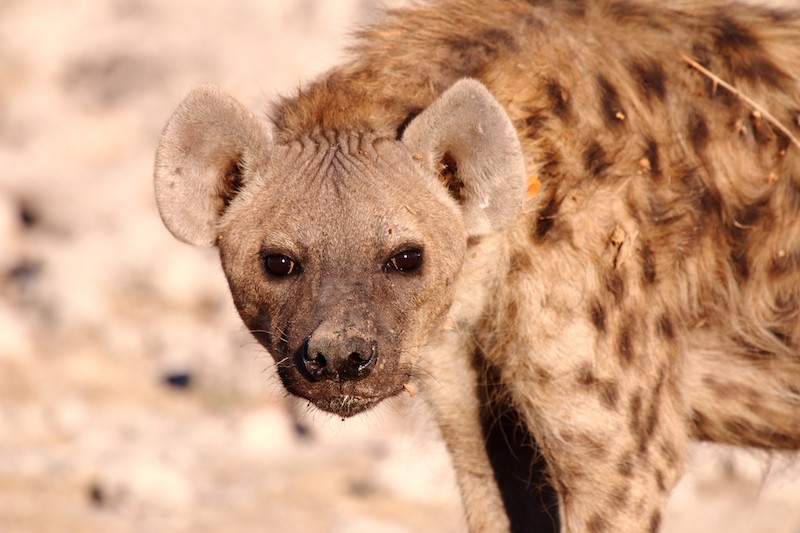
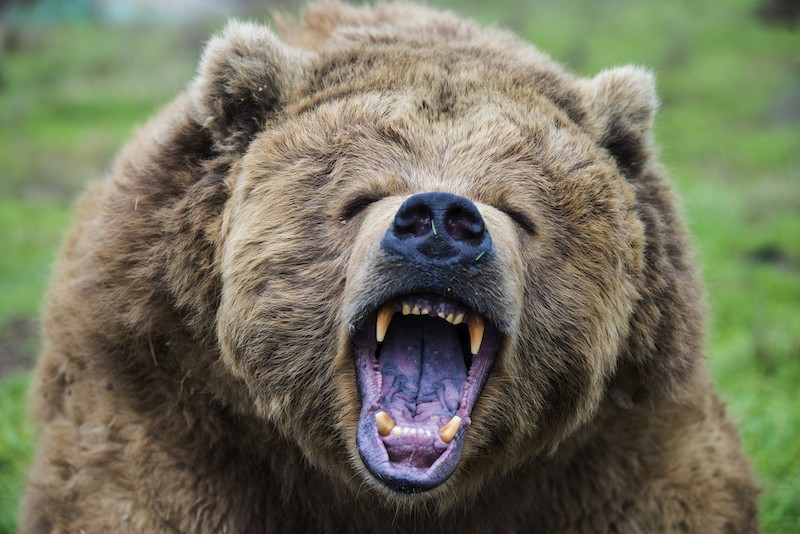
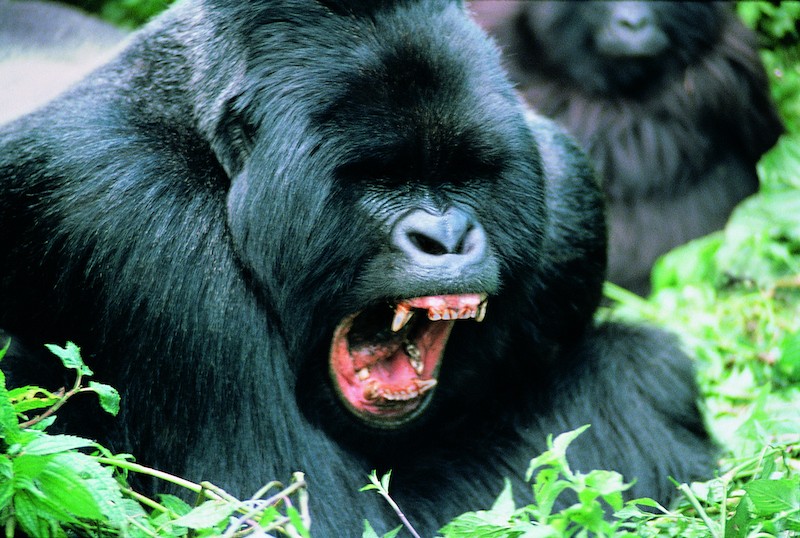
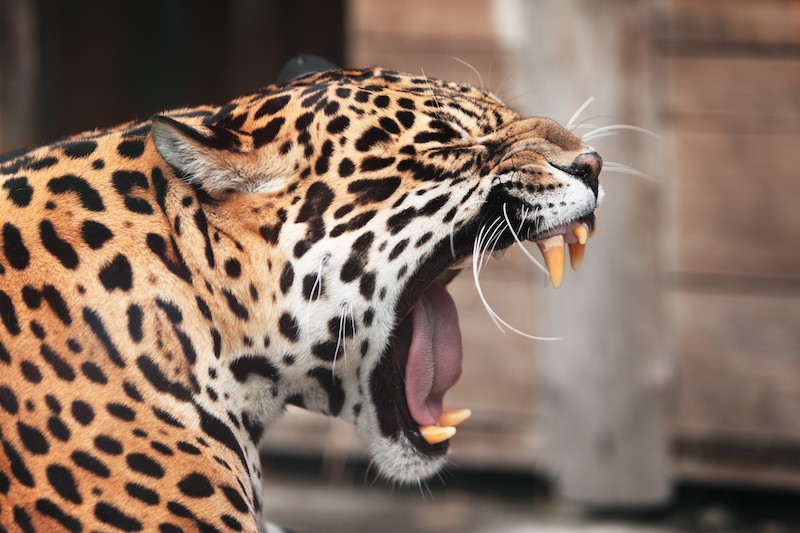
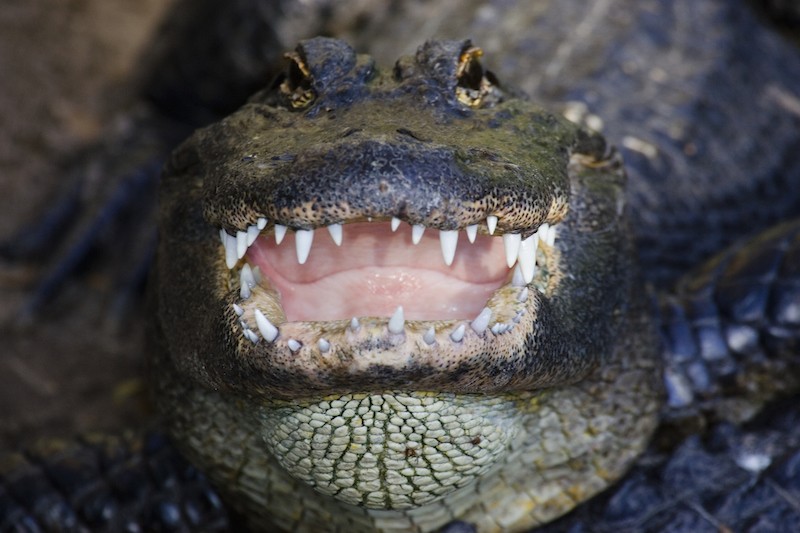
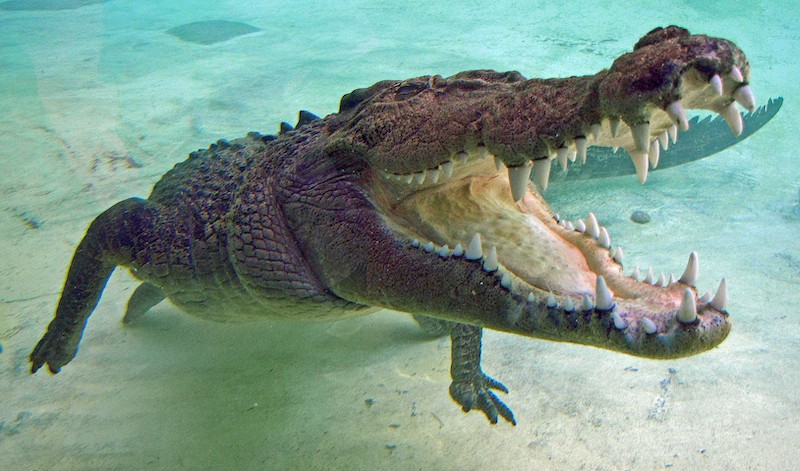
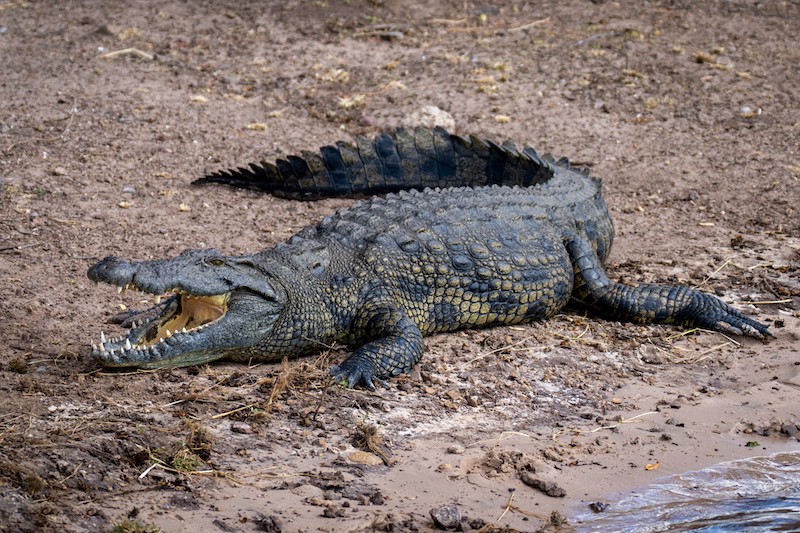
This table clearly demonstrates the wide range of bite forces found in the animal kingdom and highlights the diverse uses of this powerful adaptation.
6. How to Further Explore Animal Comparisons with COMPARE.EDU.VN
Understanding the power of animal bites is just one small example of the endless comparisons you can discover. COMPARE.EDU.VN offers a wealth of information, providing detailed and objective comparisons across a wide range of topics.
Are you looking to choose between different types of pet food for your animal? Curious about comparing various construction materials? Maybe you’re looking for the best tools for your home? COMPARE.EDU.VN is your go-to resource for comprehensive comparisons, covering everything from animal-related topics to technology, lifestyle, and more.
7. FAQ: Frequently Asked Questions About Animal Bite Force
Here are some frequently asked questions regarding animal bite force and related topics:
1. What exactly does PSI stand for?
PSI stands for pounds per square inch, a unit of pressure used to measure bite force.
2. Which animal has the strongest bite force in history?
While the Nile crocodile has the strongest bite force of any living animal, the extinct Tyrannosaurus rex is estimated to have had a bite force of up to 12,800 psi.
3. Is human bite force related to aggression?
While a strong bite can be used defensively, there is no direct correlation between average human bite force and aggression.
4. Can diet affect an animal’s bite force?
Yes, diet can play a significant role in an animal’s bite force. Animals that consume tough or hard foods often develop stronger jaw muscles and teeth adapted for increased bite strength.
5. How do scientists measure the bite force of extinct animals?
Scientists use computer models based on fossil skulls and teeth to estimate the bite force of extinct animals. These models take into account factors like muscle attachment points and bone structure.
6. Is it possible to increase human bite force?
While genetics play a significant role, it is possible to increase human bite force through targeted exercises and training of the jaw muscles.
7. Do alligators and crocodiles have the same bite force?
While both alligators and crocodiles have incredibly strong bites, crocodiles generally have a higher bite force than alligators.
8. Why do some herbivores have strong bite forces?
Herbivores, like gorillas, often have strong bite forces to help them break down tough plant material like bark and branches.
9. How does bite force relate to an animal’s survival?
Bite force is crucial for an animal’s survival, as it directly impacts its ability to hunt, defend itself, and consume food.
10. Where can I find more information about animal comparisons?
Visit COMPARE.EDU.VN for detailed and objective comparisons across a wide range of animal-related topics and beyond.
8. Conclusion: The Power of Comparison with COMPARE.EDU.VN
From the bone-crushing bite of a hyena to the mighty jaws of a Nile crocodile, the animal kingdom is filled with impressive bite forces. While humans may not possess the strongest bite in the world, understanding how our bite compares to other animals provides valuable insights into evolution, adaptation, and the diverse strategies for survival in the natural world.
Navigating the complexities of comparisons can be overwhelming. That’s where COMPARE.EDU.VN comes in. We are dedicated to providing you with clear, comprehensive, and objective comparisons across a multitude of categories. Whether you’re comparing products, services, ideas, or even the bite force of different animals, we strive to empower you with the information you need to make informed decisions.
Don’t let the challenge of comparing options hold you back. Visit COMPARE.EDU.VN today and discover the ease and effectiveness of making confident choices.
Ready to explore more fascinating comparisons? Visit compare.edu.vn at 333 Comparison Plaza, Choice City, CA 90210, United States. Contact us via Whatsapp at +1 (626) 555-9090.